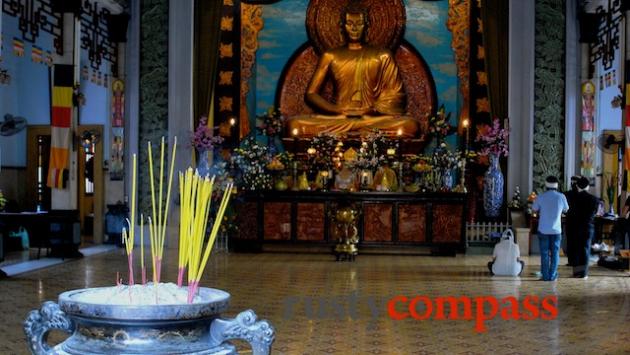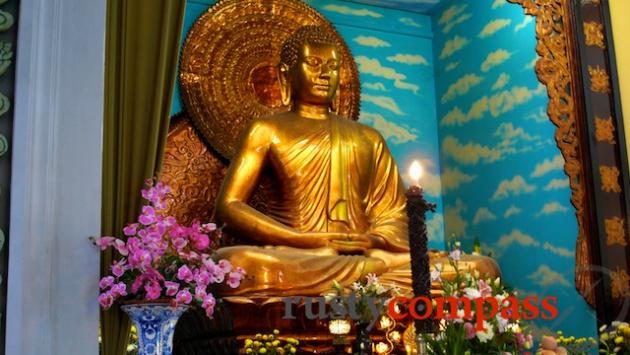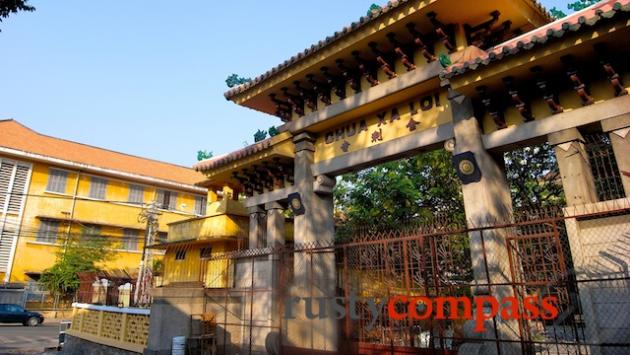On June 11 June 1963, Thich Quang Duc travelled from Xa Loi Pagoda and self immolated at a busy Saigon intersection not far from Xa Loi Pagoda (corner of Cach Mang Thang 8 and Nguyen Dinh Chieu Sts). The image of the burning monk was transmitted around the world and came to encapsulate the dilemma the US faced with a despotic ally in its campaign against Ho Chi Minh's communists.
Tensions between South Vietnam’s Buddhist majority and Diem’s Catholic clique were reaching breaking point. US support for Diem and his regime was also becoming increasingly untenable.
On August 18 1963, a crowd of 15,000 gathered at the pagoda to denounce the Diem regime. The protest was noted. Two nights later, Diem’s CIA trained special forces and ARVN units conducted a massive assault on the pagoda and its resident monks.
More than 1,000 monks were violently apprehended across Vietnam that night and the pressure on Diem’s allies in Washington escalated further.
On the 2nd of November 1963, Diem and his brother Ngo Dinh Nhu were executed in a coup by his own military officers with the tacit support of the Kennedy administration. Weeks later Kennedy was himself assassinated. The Vietnam debacle was taking shape.
Two young American journalists, Neil Sheehan and David Halberstam were at Xa Loi Pagoda on that August 1963 night. The accounts they provided of the increasing brutality of the Diem regime infuriated the Kennedy administration. They went on to become two of the most celebrated journalists and authors of the Vietnam War. Sheehan provides a thorough account of the Buddhist crisis and the Diem regime in his Vietnam War history, A Bright Shining Lie.
Xa Loi Pagoda continues to function as a place of worship and while it is most definitely not one of the country’s most atmospheric pagodas, budding historians will find a visit rewarding.
Travel tips:
If you’re exploring the Buddhist crisis of 1963 during your Vietnam travels, the place where Thich Quang Duc self immolated is a short walk away at the corner of Cach Mang Thang Tam and Nguyen Dinh Chieu Sts. A small monument has marked the site for decades. Curiously, a massive new monument was recently erected across the road.











There are no comments yet.